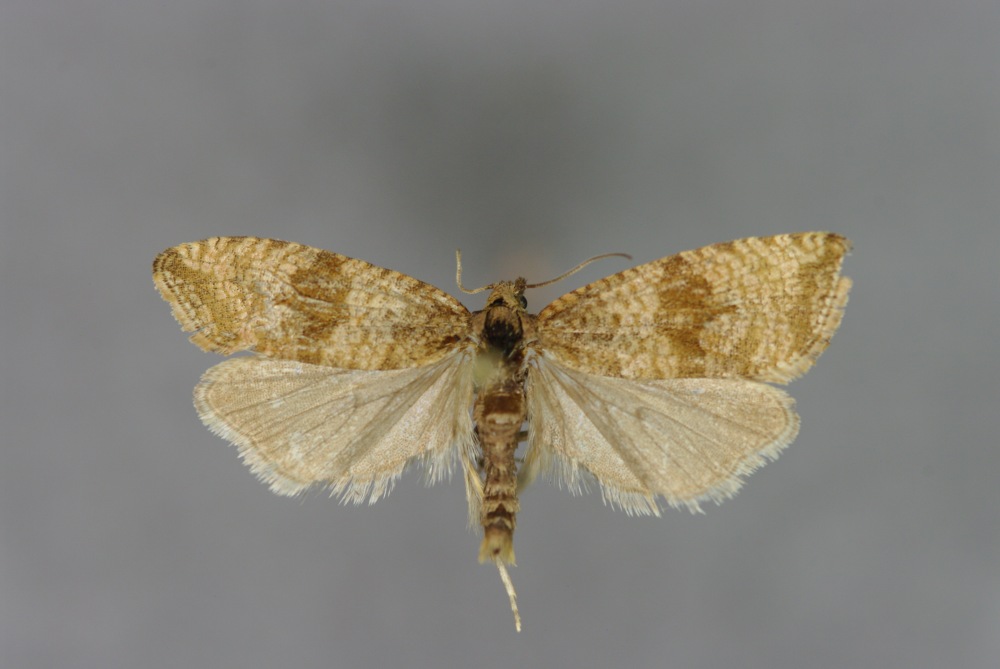Celypha Striana on:
[Wikipedia]
[Google]
[Amazon]
''Celypha striana'' is a


/ref> This species is very variable in color. Usually the basic color of the forewings is light ochreous, finely reticulated dark brown. In the middle of the forewings there is a strongly developed transverse darker brown band and brown markings on the outer edge. The hindwings are gray or pale brown.Keith P. Bland,J. Razowski,E.F. Hanco
Tortricidae, part 2: Olethreutinae
/ref> Julius von Kennel provides a full description.
Lepidoptera of Belgium
/ref>
Waarneming.nl
Lepiforum
{{Taxonbar, from=Q1309740 Olethreutini Tortricidae of Europe
moth
Moths are a paraphyletic group of insects that includes all members of the order Lepidoptera that are not butterflies, with moths making up the vast majority of the order. There are thought to be approximately 160,000 species of moth, many of w ...
of the family Tortricidae
The Tortricidae are a family of moths, commonly known as tortrix moths or leafroller moths, in the order Lepidoptera. This large family has over 11,000 species described, and is the sole member of the superfamily Tortricoidea, although the genu ...
. It is the type species
In zoological nomenclature, a type species (''species typica'') is the species name with which the name of a genus or subgenus is considered to be permanently taxonomically associated, i.e., the species that contains the biological type specimen ...
of its genus ''Celypha
''Celypha'' is a genus of tortrix moths (family Tortricidae). It belongs to the tribe Olethreutini of subfamily Olethreutinae.Baixeras ''et al.'' (2009a)
The closely related genus ''Syricoris'' is sometimes included in ''Celypha''.
Taxonomy Spe ...
''.
Subspecies
Subspecies
In biological classification, subspecies is a rank below species, used for populations that live in different areas and vary in size, shape, or other physical characteristics (morphology), but that can successfully interbreed. Not all species ...
include:
*''Celypha striana obsoletana'' Gibeaux, 1984
*''Celypha striana subcapreolana'' Obraztsov, 1949
Distribution
This species can be found in most ofEurope
Europe is a large peninsula conventionally considered a continent in its own right because of its great physical size and the weight of its history and traditions. Europe is also considered a Continent#Subcontinents, subcontinent of Eurasia ...
and in the eastern Palearctic realm
The Palearctic or Palaearctic is the largest of the eight biogeographic realms of the Earth. It stretches across all of Eurasia north of the foothills of the Himalayas, and North Africa.
The realm consists of several bioregions: the Euro-Sibe ...
, except the far north and northern Asia.
Habitat
This species prefers open grassy habitats, rough meadows and roadsides.Description
Thewingspan
The wingspan (or just span) of a bird or an airplane is the distance from one wingtip to the other wingtip. For example, the Boeing 777–200 has a wingspan of , and a wandering albatross (''Diomedea exulans'') caught in 1965 had a wingspan of ...
is 16–22 mm.UK Moths/ref> This species is very variable in color. Usually the basic color of the forewings is light ochreous, finely reticulated dark brown. In the middle of the forewings there is a strongly developed transverse darker brown band and brown markings on the outer edge. The hindwings are gray or pale brown.Keith P. Bland,J. Razowski,E.F. Hanco
Tortricidae, part 2: Olethreutinae
/ref> Julius von Kennel provides a full description.
Biology
These moths fly from late May to late September. . The males are active by day and from dusk onwards, while females fly only from dusk. They are attracted to light. The larvae feed on the roots of dandelion (''Taraxacum officinale
''Taraxacum officinale'', the dandelion or common dandelion, is a flowering herbaceous perennial plant of the dandelion genus in the family Asteraceae (syn. Compositae). The common dandelion is well known for its yellow flower heads that turn i ...
''). They pupate in a cocoon and hibernate./ref>
Notes
#''The flight season refers toBelgium
Belgium, ; french: Belgique ; german: Belgien officially the Kingdom of Belgium, is a country in Northwestern Europe. The country is bordered by the Netherlands to the north, Germany to the east, Luxembourg to the southeast, France to th ...
and The Netherlands
)
, anthem = ( en, "William of Nassau")
, image_map =
, map_caption =
, subdivision_type = Sovereign state
, subdivision_name = Kingdom of the Netherlands
, established_title = Before independence
, established_date = Spanish Netherl ...
. This may vary in other parts of the range.''
References
External links
Waarneming.nl
Lepiforum
{{Taxonbar, from=Q1309740 Olethreutini Tortricidae of Europe